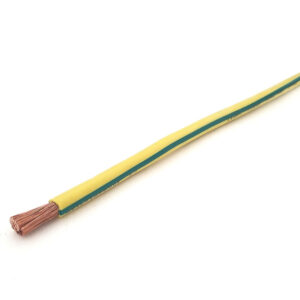UL cables are an essential component in various electrical and electronic applications, providing reliable power and signal transmission while ensuring safety and compliance with industry standards. Understanding the different types of it available and their applications is crucial for selecting the right cable for your specific needs.
UL Listed Cables:
The Listed cables have been tested by Underwriters Laboratories (UL) for compliance with safety standards. These cables are suitable for a wide range of applications, including power distribution, lighting, and communication systems. They are available in various sizes and configurations to meet different requirements.
UL Recognized Cables:
UL Recognized cables are components that have been tested by UL but are not complete cables. Instead, they are used as part of a larger system or assembly. These cables are commonly used in appliances, electronics, and industrial equipment.
UL Certified Cables:
UL-Certified cables have undergone additional testing by UL to verify their performance and quality. These cables are often used in critical applications where reliability is paramount, such as in medical devices, aerospace, and defense systems.
Types of UL Cables:
-
- THHN/THWN Cable: Thermoplastic High Heat-resistant Nylon-coated (THHN) and Thermoplastic Heat- and Water-resistant Nylon-coated (THWN) cables are commonly used in commercial and industrial applications for wiring circuits. They are suitable for both dry and wet locations and can withstand high temperatures.
- MC Cable: Metal-clad (MC) cables consist of a metal sheath that provides mechanical protection and electromagnetic shielding. They are commonly used in commercial and industrial buildings for power distribution.
- TECK Cable: TECK cables are used in hazardous locations where there is a risk of fire or explosion. They are constructed with metal armor for mechanical protection and are suitable for outdoor and underground installations.
- PLTC Cable: Power Limited Tray Cable (PLTC) is used for low-voltage applications such as control circuits, signaling, and communication systems. They are suitable for use in cable trays and raceways.
- XHHW Cable: Cross-linked High Heat and Water-resistant (XHHW) cables are designed for use in harsh environments where resistance to heat, moisture, and chemicals is required. They are commonly used in industrial and utility applications.

Applications of UL Cables:
-
- Commercial Buildings: They are used in commercial buildings for power distribution, lighting, and communication systems. They are installed in conduits, cable trays, and raceways to protect them from damage.
- Industrial Facilities: In industrial facilities, they are used for power distribution, motor control, and instrumentation. They are often installed in harsh environments where resistance to heat, moisture, and chemicals is required.
- Residential Wiring: They are used in residential wiring for lighting, appliances, and electrical outlets. They are installed behind walls and ceilings to provide power to various devices and fixtures.
- Hazardous Locations: They are used in hazardous locations such as oil refineries, chemical plants, and mines. They are designed to withstand extreme conditions and provide reliable power and signal transmission.
- Telecommunications: They are used in telecommunications systems for data transmission. They are installed in conduit and cable trays to protect them from interference and damage.
Installation Methods for UL Cables:
-
- Conduit: They can be installed in conduit, which provides protection against physical damage and moisture. Conduit is commonly used in commercial and industrial applications where the cables are exposed to harsh environments.
- Cable Tray: They can also be installed in cable trays, which are used to support and route cables in a variety of settings. Cable trays are commonly used in industrial facilities and commercial buildings.
- Raceway: Raceway is another method of installing UL cables, providing a protective channel for the cables. Raceway is commonly used in residential and commercial buildings where the cables need to be concealed.
- Direct Burial: Some of them are suitable for direct burial in the ground, eliminating the need for a conduit or raceway. This method is commonly used for outdoor lighting and power distribution.
Benefits of Using UL Cables:
-
- Safety: They are tested and certified to meet stringent safety standards, ensuring that they can safely carry electrical current without the risk of fire or shock.
- Reliability: They are designed to be durable and reliable, providing consistent performance in a wide range of environments and applications.
- Compliance: Using UL cables ensures compliance with local and national electrical codes, as well as industry standards for safety and performance.
- Versatility: They are available in a wide range of sizes and configurations, making them suitable for a variety of applications and installations.
- Peace of Mind: By using it, you can have peace of mind knowing that your electrical system is safe, reliable, and compliant with applicable regulations.
Considerations When Choosing UL Cables:
-
- Voltage Rating: Ensure that the cable you choose is rated for the voltage of the electrical system to prevent overloading and potential damage.
- Temperature Rating: Consider the temperature rating of the UL cable to ensure that it can withstand the operating conditions of your application.
- Environment: Consider the environment in which the cable will be installed, including exposure to moisture, chemicals, and physical damage.
- Installation Method: Choose a UL cable that is suitable for the installation method you plan to use, whether it is a conduit, cable tray, raceway, or direct burial.
- Compliance: Ensure that the chosen cable is compliant with local and national electrical codes, as well as industry standards for safety and performance.
In conclusion, these are an essential component in electrical and electronic systems, providing reliable power and signal transmission while ensuring safety and compliance with industry standards. Understanding the different types of UL cables available, their applications, installation methods, benefits, and considerations is crucial for selecting the right cable for your specific needs. Whether you are wiring a commercial building, an industrial facility, or a residential property, choosing the appropriate UL cable will help ensure the smooth and safe operation of your electrical system.




